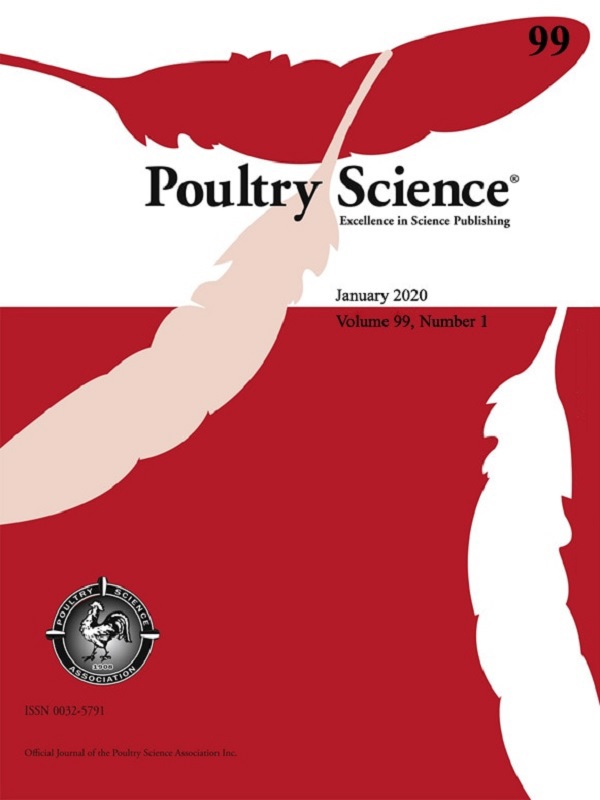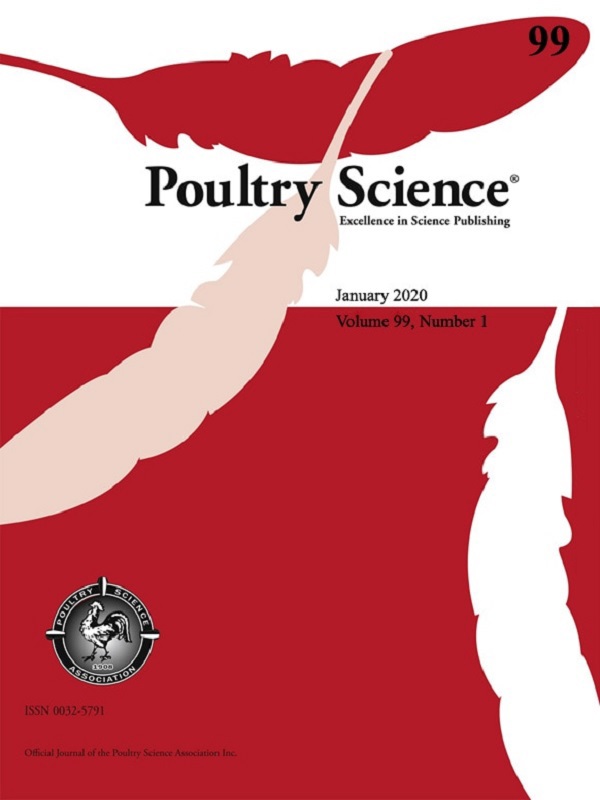
Copper and zinc sources and levels of zinc inclusion influence growth performance, tissue trace mineral content, and carcass yield of broiler chickens
Oluyinka Abiona Olukosi,∗,1 Sandra van Kuijk,† and Yanming Han†
∗ Monogastric Science Research Centre, Scotland’s Rural College, Edinburgh, EH9 3JG, UK; and
† Trouw Nutrition R&D, 3800 AG Amersfoort, Utrecht, the Netherlands
1 Correconding author: Oluyinka Abiona Olukosi
Poult Sci. 2018 Nov 1;97(11):3891-3898. doi: 10.3382/ps/pey247.
- Poultry
- Broilers
- Open Access
- 2018

Abstract
A 35-d experiment was conducted in broilers to study the effect of supplementation of sulfate or hydroxychloride forms of Zn and Cu at 2 supplemental Zn levels on growth performance, meat yield, and tissue levels of Zn. On day 0, 900 male Ross 308 broiler chicks (45 ± 1.10 g) were allocated to 4 treatments in a randomized complete block design and 2 × 2 factorial arrangement of treatments. The factors were 2 sources (sulfate or hydroxychloride) of Zn and Cu and 2 levels (low or high) of Zn. The Zn sources were zinc sulfate monohydrate (ZSM) or hydroxychloride Zn. Copper sources were copper (II) sulfate pentahydrate or hydroxychloride Cu. Each of the 4 treatments had 15 replicates and 15 birds per replicate. Birds were weighed on days 0, 21, and 35 for growth performance. On day 35, left tibia bone, liver, and blood were collected from 4 randomly selected birds per pen. In addition, 7 birds per pen were used for carcass evaluation. There was no significant source × level interaction on any of the growth performance response. Broiler chickens receiving hydroxychloride Zn and Cu had greater (P < 0.05) gain: feed, whereas broiler chickens receiving lower Zn level had greater (P < 0.01) weight gain. There was no source × level interaction on meat yield. Broiler chickens receiving hydroxychloride Zn and Cu had greater (P < 0.05) % breast yield than those receiving sulfate Zn and Cu. Higher level of Zn, irrespective of source, produced greater (P < 0.01) tibia and plasma Zn levels, whereas liver Cu was greater (P < 0.05) in broiler chickens receiving hydroxychloride Zn and Cu. It was concluded that hydroxychloride Zn and Cu were more efficacious than sulfate Zn and Cu in promoting growth performance and enhancing meat yield in the current study.
Keywords: zinc, copper, broiler, meat yield, plasma minerals

